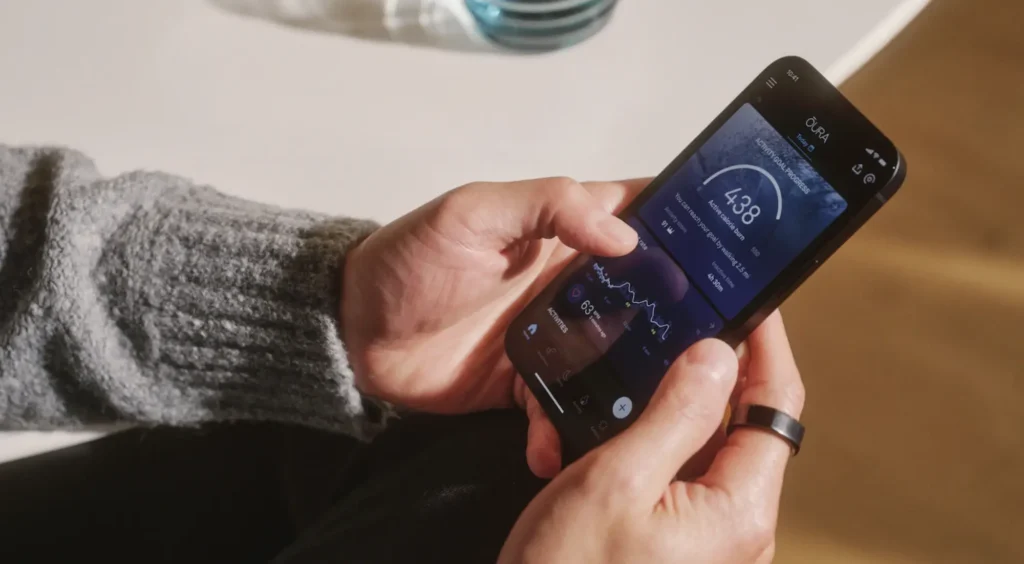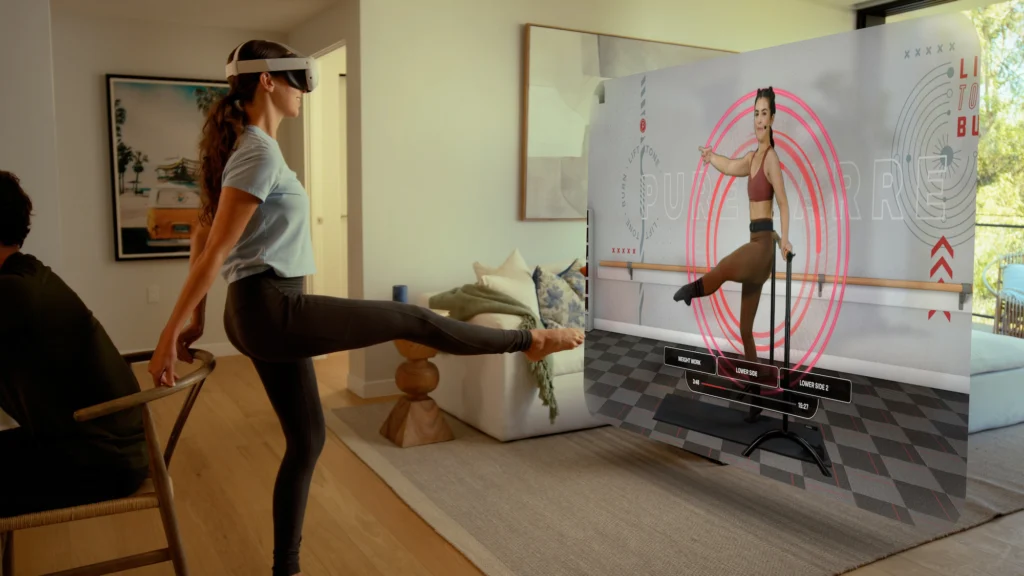The Fitness & Wellness Trends To Watch in 2024

ATN analyzes the storylines to watch in 2024, including connected fitness, the rise of strength training and the emergence of weight loss drugs
Fitness and wellness are growing priorities for many. According to Lululemon’s 2023 Global Wellbeing Report, 67% of people place wellbeing as a top priority, but only 12% say their wellbeing is where it should be. Looking back at 2023 and toward 2024, how will consumers try to narrow the gap between their fitness goals and their current reality?
Consumers’ affinity for connected fitness remains an open question, although virtual reality seems to have carved out a niche for those who desire gamified workouts. Wearables continue to advance, but are they innovating too fast? Strength is seemingly here to stay, with Pilates and functional training more popular than ever. And how will the rise of weight loss drugs impact the traditional fitness industry? While the future of fitness and wellness is uncertain, one thing is for sure: the industry is unlikely to show any signs of slowing down in 2024.
To get you ready for a new year, Athletech News previews the top fitness and wellness trends to watch in 2024:
-

credit: Lululemon Can Connected Fitness Rebound?
Connected fitness has been slow to recover from the post-pandemic surge in popularity of in-person workouts. Lululemon stopped selling Mirror, its connected fitness unit, at the end of 2023. It even struck a five-year deal with Peloton to provide fitness content for Lululemon Studio, which is replacing Mirror, as well as create co-branded apparel. The two companies also hosted a series of in-person events, demonstrating a collaboration between the one-time competitors. Earnings showed that Lululemon’s previous $500 million acquisition of Mirror was nearly worthless. Mirror’s downfall might be reflective of the current state of connected fitness.
Peloton, meanwhile, continues to cite hope for a turnaround. It recently rebranded to a more content-focused model, and offered extensive holiday deals in November to drive sales, including up to $700 off of Peloton purchases. The company is facing difficulties converting free app users into paying subscribers, which has led to wider-than-expected losses. Peloton is hoping to boost revenue with high-profile partnerships and the relaunch of Tread+, but the company has cited concerns that inflation-weary consumers will hesitate to invest in its expensive hardware.
Connected fitness companies that focused on premium hardware as opposed to virtual programming have also been struggling, such as Tonal and Hydrow, each of which began 2023 with layoffs. Even Clmbr, the LeBron James and Jay-Z-backed vertical climber maker, laid off around 25% of its staff earlier this year before being acquired by Forme.
-

credit: Crunch Fitness Will In-Person Fitness Continue To Grow?
While connected fitness struggles, in-person is back and better than ever. IHRSA’s 2023 Global Report cited a resurgence of consumers connecting and engaging during in-person workouts. Today, boutique fitness accounts for 42% of all gym memberships. The report also cited high-value, low-price and luxury fitness facilities gaining the most over 2023.
Planet Fitness continues to win big with Gen Z: Morning Consult named the brand on a list of top ten leading companies that young consumers are eyeing. The fitness franchise has an active presence on social media platforms, and its “Classic Membership” is just $10 a month, a price that hasn’t been raised in 30 years, although the brand is considering a slight increase. Crunch Fitness is also expanding rapidly. The New York-based franchise brand currently has over two million members and operates over 450 gyms worldwide. CR Fitness, the top Crunch Franchisee, plans to build 15-20 fitness clubs per year, growth that has led to over 1,000 employment opportunities.
-

credit: Lindora What’s Next for Weight Loss Drugs?
GLP-1 weight-loss drugs have also taken the fitness and wellness world by storm this year. Barclays has estimated that the industry could be worth $100 billion by 2030 and perhaps even $200 billion within the next ten years. WeightWatchers notably pivoted from its points system and weight-loss meetings to offering access to weight loss and diabetes drugs. Food companies have noticed declining sales and have scrambled to shift their strategic focus. Nestlé has created new vitamin and mineral-packed products for those on appetite suppressants.
The fitness industry has been eager to welcome GLP-1 users: Life Time launched the Miora Longevity and Performance clinic at its flagship Target Center health club in downtown Minneapolis. The clinic offers doctors, physician assistants, nurses and personal trainers in addition to weight loss drugs and non-invasive therapies like red light therapy, hormone replacement therapy, and infrared saunas. Xponential Fitness has also leaned into the weight loss medication sector, acquiring Lindora, a metabolic health clinic.
-

credit: Bojan Milinkov/shutterstock.com Will Strength Training Continue To Surge?
According to MindBody’s 2024 fitness trend report, the top three workouts of 2023 were Pilates, yoga, and strength training. Strength training in particular is growing in popularity with Gen Z. Les Mills partnered with Adidas earlier this year on a strength-focused workout to target younger consumers. The launch of Nike Strength, a collection of strength training equipment for elite and everyday athletes, also demonstrates the growth of the category. Pure Barre launched Define, a low-impact fitness class that incorporates heavier weights than those used by most boutique fitness brands. CorePower Yoga’s most recent class addition was Strength X, a high-intensity strength training class that incorporates traditional yoga poses with targeted resistance exercises. Orangetheory Fitness, known for its cardio workouts, has also gotten into the strength training craze.
At 2023’s IHRSA Convention in San Diego, Fabrizio Cecchinelli, format manager at Technogym, cited two main reasons for strength training’s surge in popularity: social media and science. Strength training’s photogenic nature makes for aesthetically pleasing posts. The science behind strength training has also propelled workouts, as a search on PubMed, the National Institute of Health’s database of biotechnology information, revealed that in the last decade, the number of searches for scientific information related to the benefits of strength training increased almost fourfold.
-

credit: Oura Can Fitness Wearables Bridge the Healthcare Gap?
Wearables continued to evolve in 2023 as consumers using the devices for reaching various fitness goals are increasingly using wearables to generally monitor their health. New hardware, software, and apps have allowed turned wearables into customizable health clinics. Heart rate monitors are standard on many wearables, and some even have FDA approval for detecting abnormalities like atrial fibrillation. Whoop offers a feature called Health Monitor which provides a daily update on all user metrics. Members can send this report as a PDF directly to a doctor or medical professional. Devices have also gotten more social. Oura launched Circles earlier this year, where members can share high-level data like “Readiness,” “Sleep,” and “Activity” scores with friends and family members. Apple Watch also allows users to share their activity with family, friends or coaches.
Strength training has also become more prominent in the wearables market. Whoop became the first fitness wearable to measure strength earlier this year. It now allows users to measure strain during strength workouts by tracking weights, reps and sets for a personalized view of their training. Oura also launched a co-branded Rest & Recovery kit with Equinox that featured a specially designed ring cover for weight training and strenuous workouts. The innovation addressed users’ concerns about the Oura ring being less compatible with barbell training.
-

credit: Xponential Fitness Will VR Fitness Take Off?
While connected fitness has waned, virtual reality (VR) fitness is a fairly nascent field, but one that’s becoming more prominent in the industry. Les Mills is investing in the space, with its recent launch of XR Dance and Bodycombat. Xponential Fitness has created Xponential+, a new virtual and mixed-reality app for Meta Quest 3 that allows users to essentially take boutique fitness classes in their living room.
On the athleisure front. Alo Yoga teamed up with Obsess, the experiential e-commerce platform, to launch an immersive virtual reality shopping experience. But it hasn’t been all fun and games—Meta was sued earlier this fall by Andre Elijah Immersive Inc (AEI), a self-proclaimed new entrant to the VR fitness space which alleged that it developed a fitness yoga app with Meta and Alo before the relationship soured. Most of the lawsuit alleges that Meta has a vertical monopoly on the VR fitness space, and colluded with Alo to keep AEI out of the market. Despite some setbacks, Meta is still leaning into the health and fitness space, believing in the power of virtual reality to make workouts fun and engaging.



